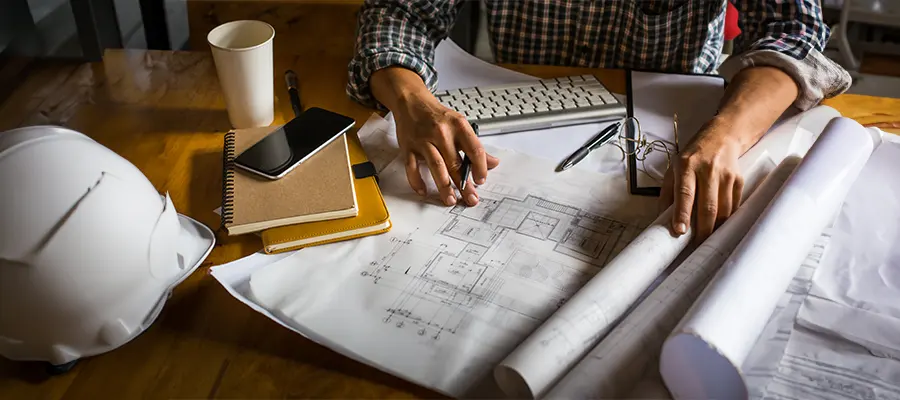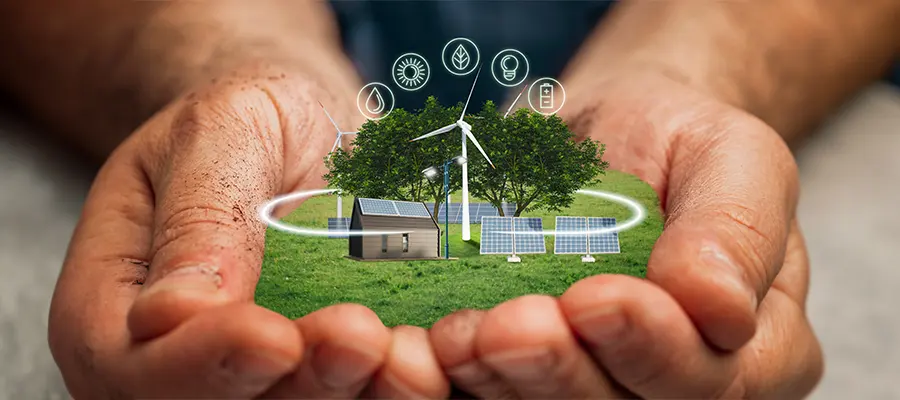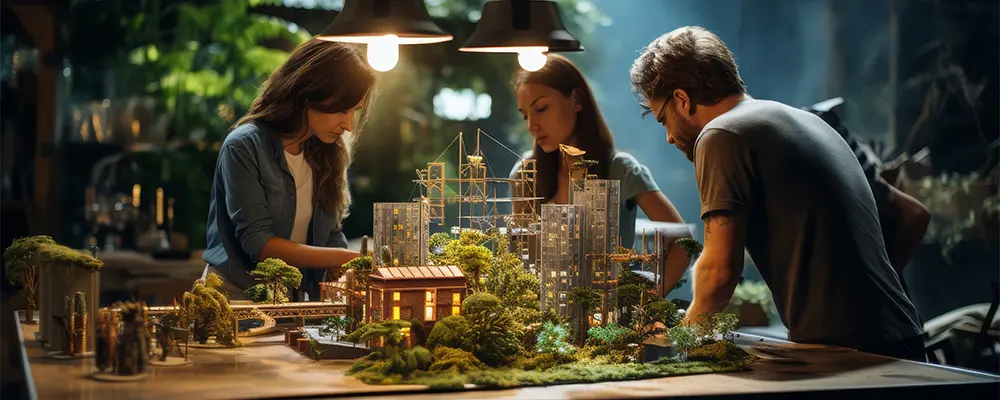With the escalating climate crisis, there is a growing trend of home and commercial renovations that prioritise waste reduction and energy efficiency. Green buildings minimise the environmental impact and provide owners with long-term utility savings.
However, upgrading old, inefficient structures usually receives less attention than sustainable new construction. Since restorations surpass new constructions yearly, there is great potential for communal benefit when green improvements are prioritised during remodelling projects.
What Does It Take to Make Sustainable Building Materials?
There are a few main things that make a building more sustainable generally, and they all fall into different groups:
Design:
Architects and designers play an important role in developing green building goals early in the planning and design process. They ensure that the design satisfies the demands of the people who will live there by employing long-lasting materials and cutting-edge technologies and that future adjustments are not required.

Construction:
Carbon emissions are reduced in sustainable buildings by including materials that may be reused, recycled, and grown again. It’s also crucial to consider how to safeguard wildlife and natural places when building, as well as how to reduce on-site waste. During the construction phase, it is also critical to monitor how much water, electricity, and transportation are consumed.
Efficiency in Using Energy:
To be very efficient with energy, you need to use technologies like insulation and better ways to heat your home, like heat pumps and solar panels. A building can greatly lower its carbon footprint by reducing the amount of pollution it makes from energy and power.
Water Efficiency:
Sustainable buildings try to use natural sources like rainwater collection systems and waste less water so they don’t have to rely so much on public water supplies. This not only saves water but also makes use of resources more efficiently.
Carbon Emissions:
It is very important to understand and deal with both practical and actual carbon emissions. A building emits a specific quantity of carbon dioxide during active occupancy, commonly referred to as operational carbon. The release of carbon dioxide during the production and transportation of building materials is commonly referred to as “embedded carbon.” Reducing both types of waste is crucial for overall sustainability.
Environmentally Friendly, Neighborhood-Friendly, and People-Friendly steps:
When beginning a construction project, it is crucial to consider its impact on people, communities, and the environment. It is also crucial to incorporate fair treatment and compensation for construction workers, promote job creation, and actively engage with the community when implementing environmentally friendly building practices.
We’ll look at some of the best green home and business remodelling ideas in this blog.
Techniques for Sustainable Renovation
Updates to High-Efficiency Equipment
One of the main goals should be replacing old, ineffective mechanical systems. It saves a lot of energy and water to get ENERGY STAR appliances, bathroom fixtures, water heaters, HVAC systems, and lights. Furthermore, the latest techniques for closing air gaps and blown-in insulation work very well.
Integration of Solar Power
Including solar photovoltaics is one of the most futuristic additions, particularly for structures with lots of space on the roof or in the lot for solar panels. State and federal incentives facilitate access to solar electricity. Additionally, producing renewable energy on-site reduces reliance on fossil fuels and saves electricity costs for decades. Even the smooth integration of panels into facades is made possible by innovative building-integrated solar technology.

Management of Stormwater
Sustainable management of rainwater runoff replenishes groundwater and lessens flooding and site erosion. Stormwater is retained and diverted from overburdened sewer systems using rain gardens, permeable pavements, rainfall collection barrels, bioswales, and green roofs.
Superior Envelope Renovations
By upgrading windows, weatherstripping, adding new insulation, and adding draft protection, you may air-seal the building envelope and reduce energy leaks, improving interior temperature control. This reduces the demand for heating and cooling immediately. Modern windows specifically stop heat loss by conduction during the winter and heat gain from the sun during the summer.
Adjustments for Water Reduction
Installing low-flow water taps is one way to cut down on water waste. You could use a dual flush toilet, a bathroom tap that doesn’t need to be touched, or a showerhead that doesn’t use more than 1.5 gallons per minute. It’s better to use less water in things like dishwashers, washers, and irrigation controls.
Better Choice of Materials
Select environmentally friendly, non-toxic paints and furnishings, natural fibre crops like bamboo, quickly growing woods, and repurposed wood. Steer clear of binders, paints, and carpets that produce volatile organic compounds (VOCs), as they can lower indoor air quality. Over time, using healthy materials enhances occupant performance and well-being.
In conclusion, green renovation of existing buildings has positive financial and social effects. Not only do property values increase, but homeowners and business owners also experience utility savings. If you’re interested in making your next remodelling project ecologically beneficial, consider reaching out to Brick & Bolt Construction. Our team specialises in sustainable restoration ideas that enhance building performance, reduce usage costs, and increase overall appeal. By renovating with a green mindset, you’re investing in a more environmentally friendly future.

